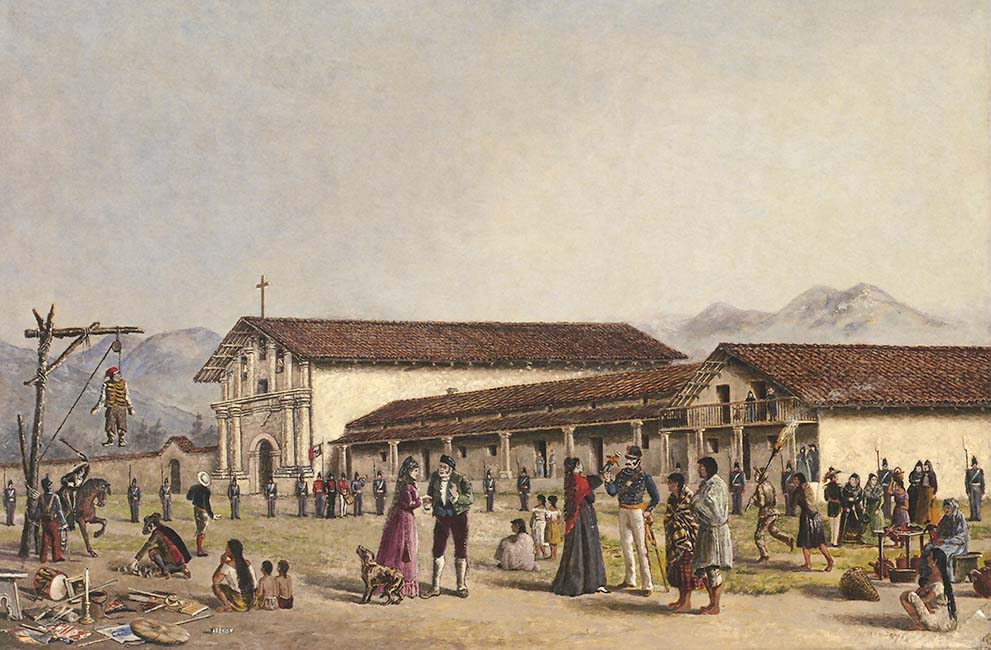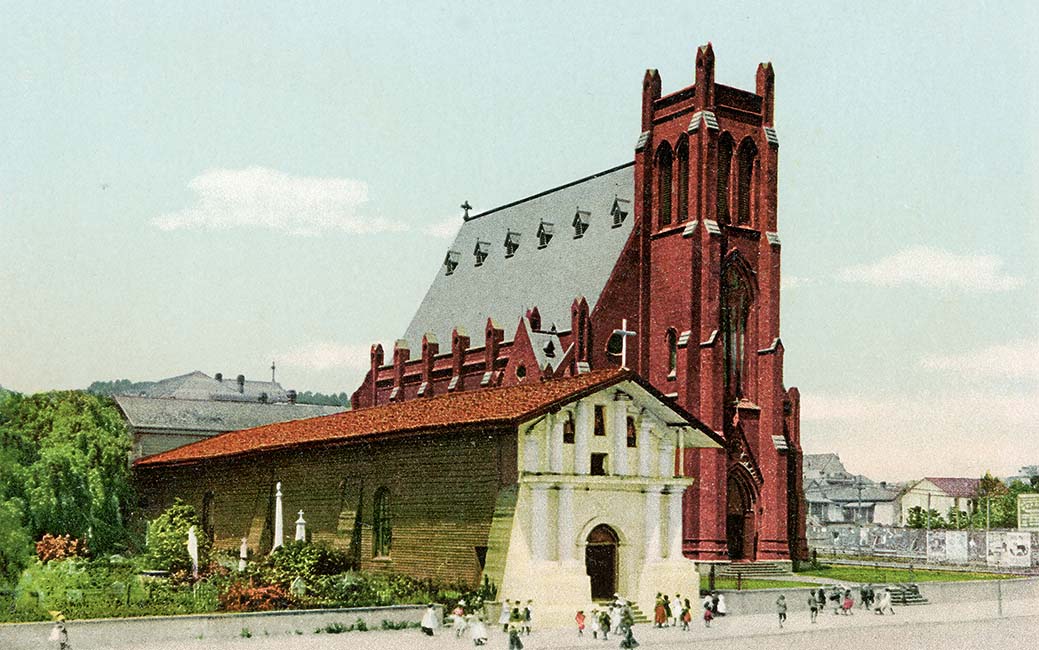Address
3321 16th Street
San Francisco, CA 94114
United States

Founded:
October 9, 1776 - The 6th California Mission
Also Called:
Mission Dolores
Current Status:
The old mission chapel is part of the Basilica Parish of Mission Dolores. The basilica, which towers over the original mission, was dedicated in 1918. Basilica status was granted in 1952.
Summary:
Although the first mass was held on June 29, 1776, the "Official" founding date is set as October 9, 1776.The mission’s iconic church is the oldest intact building in San Francisco. Popularly called Mission Dolores, the chapel contains some of the most sophisticated religious art in the mission chain. The cemetery is a well-landscaped oasis in the middle of a busy city.
3321 16th Street
San Francisco, CA 94114
United States
415-621-8203
Please contact the mission directly by telephone or by visiting the mission website for the most current information.
Due to Covid-19 restrictions, it is best to check for current information.
For details about weddings and other special services, please contact the Parish office by telephone at 415-621-8203 or by visiting the mission website.





1834
1857
Saint Francis of Assisi, Founder of the Franciscan Order

The Native Americans in the area were Ohlone. Indians from other groups were recruited or taken into the mission, including members of the Bay Miwok, Coast Miwok, and Patwin tribes. The mission was founded at the village of Chutcui. A marvelous drawing of Indians playing a stick game outside the mission was done by Expedition Artist Louis Choris.

Near San Francisco Bay, which the Spanish had just begun to explore. Juan Manuel de Ayala sailed into the Bay in San Carlos on August 5, 1775.
The Spanish became aware of the importance of San Francisco and its harbor after they discovered and named it the Bay of San Francisco in 1769.
The mission is now located about a half mile from the original site, at present day 16th and Dolores Streets.

Traditional quadrangle completed in 1798.
Dolores Lake and a stream that ran by the mission, which the Spanish named Arroyo de Nuestra Señora de los Dolores.
In 1783, after more than a decade in service, the mission had only 215 neophytes. During the peak years, from 1801-1821, the population ranged between 1,000-1,200 with the peak population of 1,251 achieved in 1820. The population declined sharply in the later years to 204 in 1832. The mission was plagued by disease and many of the Indians left.
San Francisco de Asis built its livestock herd from 826 head to over 20,000 animals in the peak years between 1803-1814. In 1832, just before secularization in 1834, the herd population was 9,518.

None of the Bay Area missions achieved significant agriculture production except Missions Santa Clara and San José (which ranked second in the entire chain).
Over the years 1782-1832, Mission Dolores harvested 87,000 bushels of grain and produce placing the mission in the lower third of mission producers. Wheat, barley, corn, beans, and peas were the primary crops.
The small chapel (114 feet long by 22 feet wide) was dedicated on August 2, 1791. It has survived earthquakes, fires, and other calamities.
A drawing of Mission Dolores made by Edward Vischer in 1782 shows how the mission looked in the mission era. The artist depicts a bull fight taking place at the mission during one of the many feast days that were celebrated.
In 1918 all the mission buildings except the historic chapel were demolished and a large Gothic-Revival style church constructed.
The mission chapel was restored in 1917 and received a complete restoration and retrofit in 1990 and 1994.



The three original bells hang on rawhide thongs above the entranceway, in a narrow niche. They are dedicated to San Francisco, San José, and San Martin. The bells are still in use.
The richly gilded baroque altar and reredos in the sanctuary of the church are stunning. The art is among the most sophisticated in the mission chain.

The hospital Asistencia of San Rafael, which subsequently became a full mission, was established 15 miles north of Mission Dolores in 1817. Hundreds of neophytes transferred there to regain their health.
San Francisco de Asis (popularly called Mission Dolores) is one of the jewels of the California Missions. While not too much remains of the original complex (just the church and part of the original cemetery), the old mission chapel is the oldest intact building in San Francisco. It has been carefully preserved. There was a complete restoration and retrofit in 1990 and 1994.
Because of this mission's location and appeal, San Francisco de Asis has been extensively illustrated by expedition artists and the prominent painters of the 19th century. The Historical Image Gallery presents fourteen of the most important paintings, drawings, and lithographs of this historic mission and several events that took place in its early history.
The Contemporary Image Gallery contains more recent photographs taken by several different photographers from around the Church gardens and the Church interior.






The current mission chapel, dedicated in 1791, has survived earthquakes, fires, and other calamities. It is the oldest intact building in San Francisco. There are quite a few architectural drawings of this historic structure.
The mission complex extended over several acres during the mission era and there were additional buildings to the right of the church. Pay attention to the date of each of the drawings.






